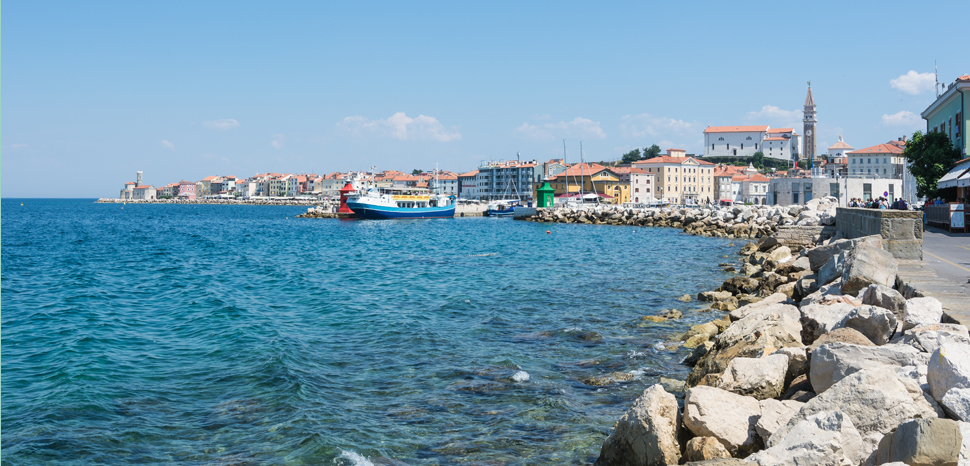For more than a quarter-century, Slovenia and Croatia have been embroiled in a border dispute along the Adriatic Sea – one that has even managed to put a squabble over washing machine customs duties into the international headlines. Now members of the European Union and NATO, the former Yugoslav nations were expected to resolve tensions once and for all following an international court ruling in June last year. Instead, negotiations ignominiously collapsed at the end of December. While the Balkan wars ended two decades ago, the echoes of Yugoslavia’s bloody breakup still ring across the region. All of its former republics, from Slovenia to Montenegro, continue to suffer from after effects, from turf disputes to instability at home.
With Slovenia backing the deal, Croatia dropped out of arbitration, citing breach of process by its neighbor to the north after evidence emerged of a Slovenian judge on the panel exchanging confidential information with the government in Ljubljana. Given six months by the court to review and adopt the ruling, which saw the establishment of a 10 nautical mile-long corridor linking Slovenia to international waters, the deadline for reaching an agreement expired days after Christmas. Slovenia and Croatia are no closer to reaching a deal, and 2018 looks to be a rocky year as a result.
The collapse of the proposed agreement has seriously worried the EU and other stakeholders, as the deal was set to be a model of conflict resolution for other Balkan states hoping to accede to the bloc. Instead, the 7.3 square miles in the Bay of Piran, of which Croatia claims half ownership, is set to remain a thorn in Brussels’ side for some time yet.
The dispute underscores a lingering suspicion among many southeastern European states that has persisted even decades after the Balkan conflicts of the 1990s. And most importantly, it raises serious concerns about how ready these states are to shed their quarrels of the past and build towards a more amicable, stable future.
These persistent territorial disputes with their neighbors, and continuing instability within their own borders, remain major obstacles to Montenegro and Serbia’s hopes to join the bloc.
After all, Slovenia is not the only country in Croatia’s sights; the only Balkan republic not in a dispute with the coastal country is Macedonia, for the simple reason that it does not share a border with Croatia. Bosnia and Herzegovina, for one, has unresolved territorial disputes with Croatia along the coastline; the islands of Veliki Skolj and Mali Skolj are uninhabited and too small to serve any real purpose to either state, but maintain a symbolic importance for the two maritime nations. An agreement was signed on the border demarcation in the late 1990s, but was never ratified, as the Croatian Parliament said there had been a mistake made on the maps.
The ever-shifting Danube River also continues to rile Serbian and Croatian lawmakers, with both sides failing to agree on the alignment of the border to its seasonal flows. Croatia has proposed that both countries resolve the dispute according to the course of the river; even so, disputes have arisen as Croatia claims some 10,000 hectares of land on the Serbian side and Serbia claims 1,000 hectares on the other. Since the border area was occupied during the Croatian War of Independence and only returned to Croat rule after seven years, blood still runs hot in the veins of the public, meaning that a peaceful compromise may be out of reach for a long time to come.
These persistent territorial disputes with their neighbors, and continuing instability within their own borders, remain major obstacles to Montenegro and Serbia’s hopes to join the bloc. The smallest of Croatia’s neighbors, Montenegro scores low on the tally board for having two ongoing border disputes with two of its neighbors – Kosovo and Croatia – in addition to enduring political stagnation. Even if it shares a border with Croatia that spans a mere 20 kilometers, it is quarreling with Zagreb over Cape Ostro and over the Prevlaka peninsula, and has been sparring with Kosovo over the Cakorr and Belluha mountain peaks. Agreeing on a border deal with Montenegro – not to mention cooling tensions with its main rival, Serbia – is one of the most important tasks facing the Kosovar government, as Brussels has stated it will not abolish the visa requirement for Kosovo citizens until it is settled.
Montenegro’s veteran leader, Milo Djukanovic, looks set to run again this year, despite having stepped down in October last year after almost three decades of a leadership that seemed to mimic a petite game of musical chairs. Last month, opposition MPs only just started to return to their seats, after having boycotted Parliament for more than a year over alleged election fraud and the ruling party’s refusal to host snap elections.
On top of that, corruption and organized crime in the country are rife: last year, Montenegro ejected MANS, a partner organization of Transparency International, from an EU anti-corruption working group on the country’s accession process, showing that the government is not making real efforts to fight cronyism and misconduct. The country scores 45/100 in Transparency International’s Corruption Perceptions Index, a stat indicative of serious problems. And according to a recent report, authorities in Serbia and Montenegro have solved only four out of 83 gang-related murders over the past 5 years, suggesting that organized crime is ignored at best and entrenched in state institutions at worst.
When it comes to the Western Balkans’ European ambitions, then, the persistence of border disputes are only the tip of the iceberg. They are part of a broader pattern of clues that ex-Yugoslav countries may yet find it difficult to shed their bad habits of the past, not least of all a tendency towards unnecessary bickering and internal instability. And if the EU can’t help broker a solution to the spat over the 7.3 square miles of the Bay of Piran, what does this mean for the rest of its Balkan objectives?
The opinions, beliefs, and viewpoints expressed by the authors are theirs alone and don’t reflect any official position of Geopoliticalmonitor.com.




